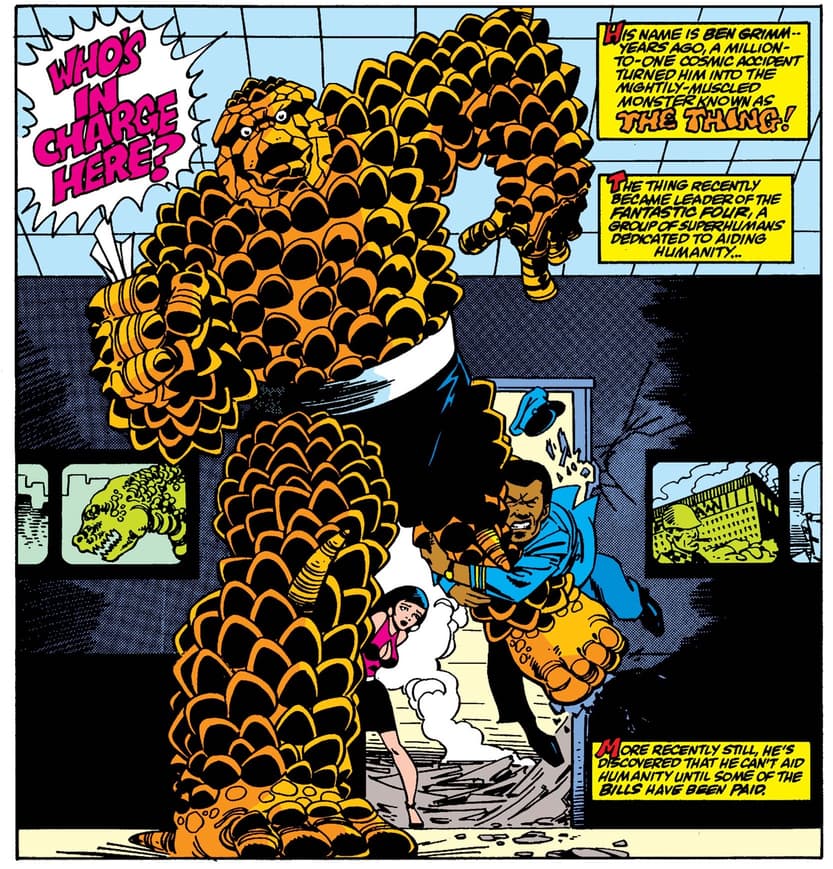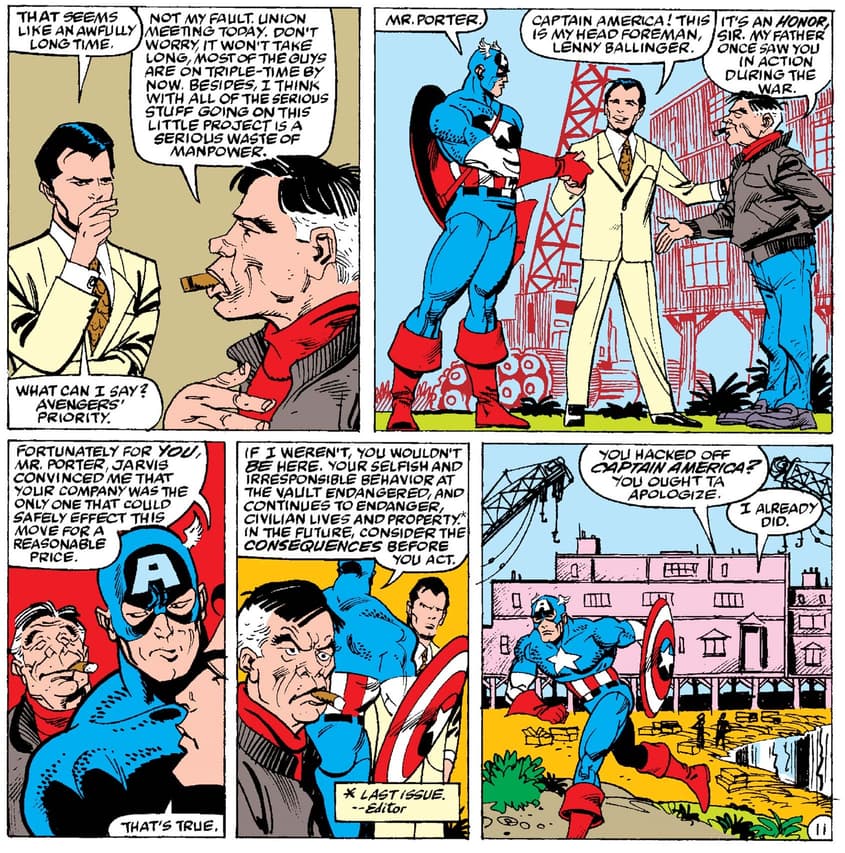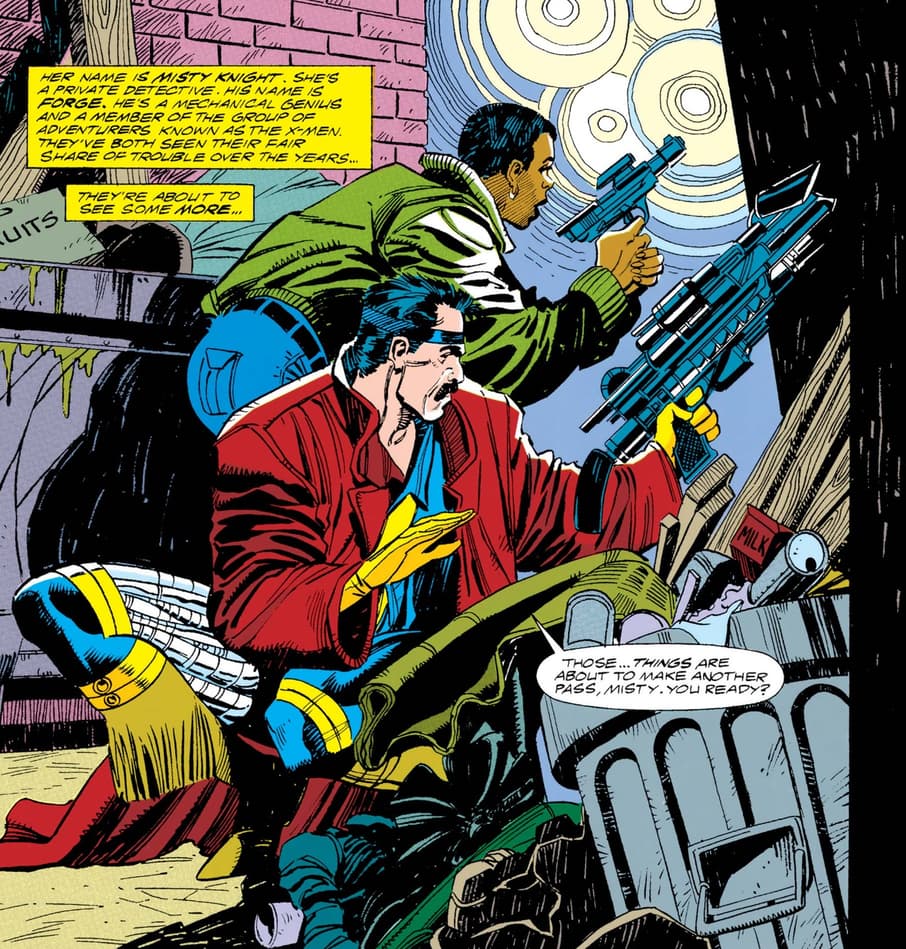Dwayne McDuffie’s Legacy in Comics
Read the stories behind the entertainment titan.
READ MCDUFFIE’S MARVEL COMICS HERE.
Dwayne McDuffie, a pioneer of entertainment, left a lasting impact at Marvel with his bold stories, rich characters, and a signature sense of humor.
Born in 1962, McDuffie’s childhood love of science and science fiction opened the door to a lifetime of writing, editing, and producing, a career that spanned film, television, and comics. Come 1993, McDuffie had aligned with creators Denys Cowan, Michael Davis, and Derek T. Dingle to found Milestone Media, a creator-first comic imprint that emphasized individualism across a range of voices. McDuffie was also the creator and producer behind animated Super Hero series Static Shock, based off a “Dakotaverse” character from this Milestone universe.
And, McDuffie’s Marvel contributions are many. Over the course of a decade he worked as an editor and writer, co-creating clean-up crew Damage Control. He also penned two notable runs on DEATHLOK, placing Michael Collins, pacifist computer programmer, into the body of a military cyborg.

Executive Editor Tom Brevoort worked directly with McDuffie, stretching back to his earliest days as an Assistant Editor.
“Dwayne was probably the smartest person working on staff when I started as an office intern in 1989. A very gregarious and fun-loving person.”
As for McDuffie’s influence, Brevoort remembers his fearless approach to making sure that the stories he cared about always maintained his vision.
“Dwayne was far more plugged into questions on race and representation than anybody else at Marvel in those days, and that caused him to butt up against people when he saw something being done that he thought was ill-informed or just plain wrong. He was never shy about expressing his opinion, and he was deadly with a quip and a sharp line.
Because he wasn’t happy with the way that characters who looked like him were depicted in comics, Dwayne worked on trying to create better representation for people of all kinds in his work. That most notably took the form of his launch of Milestone Media, distributed by DC, where he and his collaborators created a wide assortment of characters, the best known of whom today is probably Static.
I saved the mock pitch he wrote up for ‘Teenage Negro Ninja Thrashers’ after not one, but two Black skateboard-riding characters were suddenly parading around the Marvel Universe at the same time. It was featured years later in a museum exhibit dedicated to the depiction of characters of color in comics.”

Here are a selection of McDuffie’s Marvel works, a few of which you can read for free on Marvel Unlimited. Visit here for the complete list of free arcs, series, and storylines available to read right now.
DAMAGE CONTROL (1989)
Now free on MU!
McDuffie stepped into the role of writer while still an editor in Bob Budiansky’s office. His first original Marvel story was DAMAGE CONTROL (1989), a co-creation with artist Ernie Colón. This “Restoration Comedy” was a sitcom-meets-soap opera, complete with an unordinary cast in ordinary roles.

From high-level execs, receptionists, to insurance adjusters and traffic officers, DAMAGE CONTROL followed the catastrophe-prone office staff of a company responsible for clean-up following Super Hero battle. Disaster relief contractors in a comic book world.
That very same year, McDuffie and Colón reunited for a second run on DAMAGE CONTROL as part of an ACTS OF VENGEANCE crossover—same pack of characters, same high-profile problems.

IRON MAN: ACTS OF VENGEANCE
At the height of late ‘80s mega-event ACTS OF VENGEANCE, McDuffie wrote two chapters on IRON MAN, issues #251-252.
Kingpin set up an oddly orchestrated battle between Tony Stark and the Wrecker, founding member of the Wrecking Crew.
Curtis Carr, AKA superhuman alchemist Chemistro, teamed with the Armored Avenger against this crow bar-wielding menace, halting his demolition of Stark Prosthetics.
DEATHLOK: MICHAEL COLLINS
In 1990, McDuffie recast Deathlok as Michael Collins, a mild-mannered father, husband, and academic who makes the mistake of working for the Roxxon Corporation. After catching wind to just one of Roxxon’s ethical offenses, Collins’ brain was removed in a consciousness-swapping experiment, before being placed in the body of weaponized machine-man Deathlok.
Michael Collins was a co-invention of writer Gregory Wright and artist Butch Guice, both creators on Deathlok’s first volume. But with issue #3, artist Denys Cowan took over on pencils, a creative meeting that paved the way for his and McDuffie’s eventual partnership at Milestone.
To symbolize Collins’ dual existence between an unwilling commando and devoted dad, McDuffie referenced Black theorist and historian W.E.B. Du Bois’ The Souls of Black Folk, titling the intro arc to DEATHLOK’s 1991 volume “The Souls of Cyber-Folk.” Brevoort says that this naming initially faced Editorial pushback.
“The title ‘The Souls of Cyber-Folk’ was the subject of a slightly contentious moment. Bob Budiansky, who was at that point editing DEATHLOK before passing it on to me, either didn’t get the reference or else didn’t think that it was commercial enough. And I don’t fault Bob for that—I certainly didn’t understand the reference either. But for a period of about a week, the title of that story arc changed to CYBERWAR—it was even re-lettered on the cover. And then, when Dwayne came into the office and discovered that this change had been made, he had to convince Bob to change it back. Which he did, and which proves just how persuasive Dwayne could be.”
“The Souls of Cyber-Folk” is available to read for free right now, collected in DEATHLOK (1991) #1-5. Cyber-beings from Misty Knight to the X-Men’s Forge are thrown into a battle for freedom against Doctor Doom, the “visionary” responsible for the abduction and disassembly of his android and cyborg victims.

BEYOND!
McDuffie returned to the Marvel fold with BEYOND! (2006), a mismatched, Battle Royale series that dropped nine randomly powered Super Heroes on an artificial planet known as Battleworld… a competitive arena of death.

As opposed to trying to kill each other, Spider-Man, teenage Gravity, Venom, Hank Pym, Wasp, Medusa, Kraven the Hunter, Firebird, and the Hood, united as Battleworld’s Nine—but the dangers of their destination proved craftier than their goals.

After a pivotal teammate fell in issue #1, the ragtag assembly confronted Michael Collins: Deathlok, a crash-landed man harboring Battleworld’s darkest secrets. This marked McDuffie’s return to one of his original characters, a tipping point moment for the soldier-turned-pacifist. Issue #3, Deathlok vs. the artificial being Dragon Man, is a standout.
THE NEW FANTASTIC FOUR
Free on MU! Read FANTASTIC FOUR (1998) #447-550 for McDuffie’s run on Marvel’s First Family.
In the aftermath to the first Superhuman CIVIL WAR, McDuffie partnered with artist Paul Pelletier to steer the team into an era that rocked the foundation of the core Four.
While Reed Richards and Sue Storm stepped down to work out their marital issues, the Thing and Human Torch were left to hold down the fort at the Baxter Building… with a little leadership from recently-married power couple Storm and Black Panther.

Their doozy of a first mission? Overthrowing planet-devourer Galactus and his servant of sustenance, the Silver Surfer.
WORLD WAR HULK: AFTERSMASH!
McDuffie’s fourth and final run on DAMAGE CONTROL!
This three-issue limited series resumed the outlandish exploits of the original office crew, now joined by Bill Foster’s nephew, the brainy-yet-still-green Goliath.

In WORLD WAR HULK, the Hulk challenged all of Earth’s heroes in an ultimatum of planet-wide destruction, catalyzed by his betrayal at the hands of former allies including Doctor Strange and Professor X.
Accompanied by his Warbound from 2006’s PLANET HULK, Banner’s massive Hulk-out created a lot of overtime work for Damage Control, still understaffed, still underappreciated, and still flailing in the face of chaos. Although this time out, picking up the pieces threatened to start a whole new war.
A displeased sentient Chrysler Building is one of the series’ more unforgettable moments.

McDuffie’s fresh approach to comics storytelling was not limited to Marvel. An industry trailblazer, it was the writer’s own place in fandom that informed every aspect of his work. Read his complete Marvel canon in our Creator Spotlight, a celebration of a lifelong legacy that expanded far beyond the panel, but influenced entertainment culture at large.
Looking for more iconic arcs, complete events, and Marvel must-reads you can read for free? Read online here, or download or update the Marvel Unlimited app for iOS or Android at the Apple or Google Play app stores today.
For more of Marvel’s greatest comic books in print, please reach out to your local comic book shop to ask about services they may offer, including holding or creating pull lists, curbside pick-ups, special deliveries and other options to accommodate. Find and support your local comic book shop at http://comicshoplocator.com.
The Hype Box
Can’t-miss news and updates from across the Marvel Universe!








